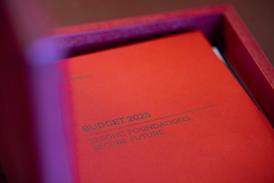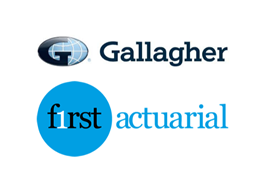Year in review: Schemes took a number of different steps to work their growth assets harder during the past 12 months, with property being a particular area of interest for investors.
The year saw an equity market recovery while government bond yields remained low, benefiting schemes with more traditional asset allocations.
Those schemes that had moved out of growth assets have needed to get better performance from their remaining holdings in order to meet the assumptions built into their funding plans.
Kent ups property to benefit from stronger yields
Kent Pension Fund has decided to increase its property holdings by £60m in order to take advantage of good yields, with some of these funds coming out of its equity holdings.
Nick Vickers, head of financial services at Kent County Council, said property was "the only thing we do feel comfortable putting money into".
The £3.8bn fund had 7.9 per cent of its assets allocated to property, according to its 2013 annual report.
South Yorkshire bucks trend with equity allocation
South Yorkshire was at the forefront of those local authority schemes that, rather than rushing headlong out of equities and into bonds, following recent years of market volatility, has decided to stick with the asset class.
Indeed the £5.3bn scheme has seen an increased allocation to this asset class, with 60.3 per cent of its portfolio in equities at the end of the 2012/13 financial year, compared with 57.3 per cent the year before and 57.7 per cent in 2010/11.
Investment consultants were optimistic about continued equity performance. Tim Giles, partner at consultancy Aon Hewitt, commented: “Our view is still that equities might not continue to rise as much as they have in the past, but they still look good relative to the bond portfolio."
Dyfed latest scheme to boost EM equity holdings
Some scheme investors have decided to increase their emerging market equity holdings in order to drive performance and diversification by accessing markets considered uncorrelated with the developed world equity markets.
The £1.4bn Dyfed Pension Fund decided to up its EM equity exposure by five percentage points, taking money out of its UK and European holdings to fund the switch.
There is a range of ways to access these markets, including debt and currency funds, according to Simeon Willis, principal consultant at KPMG.
“You can get funds that invest in emerging market equity debt and currency and then they tactically decide which out of most of those looks attractive,” Willis said at the time.
USS steps up co-investments to boost private equity
The Universities Superannuation Scheme shared its plans to increase the amount of private equity it accesses via co-investments, where the fund invests in end projects directly alongside managers.
This type of investment, usually the preserve of larger schemes with the funds and resources to make the transactions viable, allows schemes to suppress costs and thus improve value.
The £33.9bn fund is aiming at having a third of its private equity investments carried out in this fashion, according to Mike Powell, head of alternatives.
“It is going to take a while for us to get there – it is currently around about 13 per cent,” he told the National Association of Pension Funds' 2013 investment conference.
Plumbing scheme ramps up property exposure
The Plumbing and Mechanical Services Industry Pension Scheme decided to boost its property exposure for the second year running.
Schemes have continued to turn back to commercial property from other more niche asset classes as they hunt for value.
Robert Burgon, the scheme's secretary and pensions manager, called it a "strategic move".
“It is returns we are looking for," he said at the time. "We can get a yield of over 7 per cent on most of the properties in the portfolio.”






















